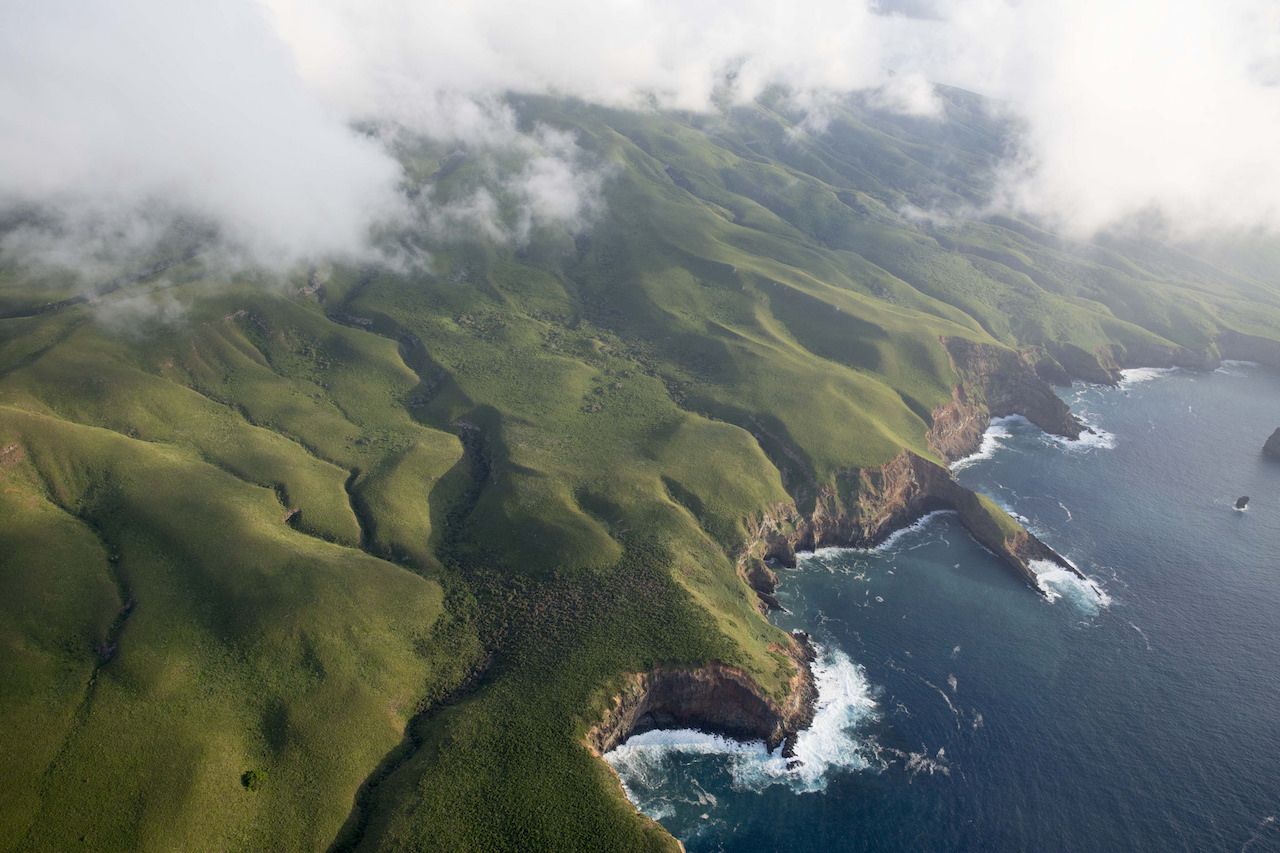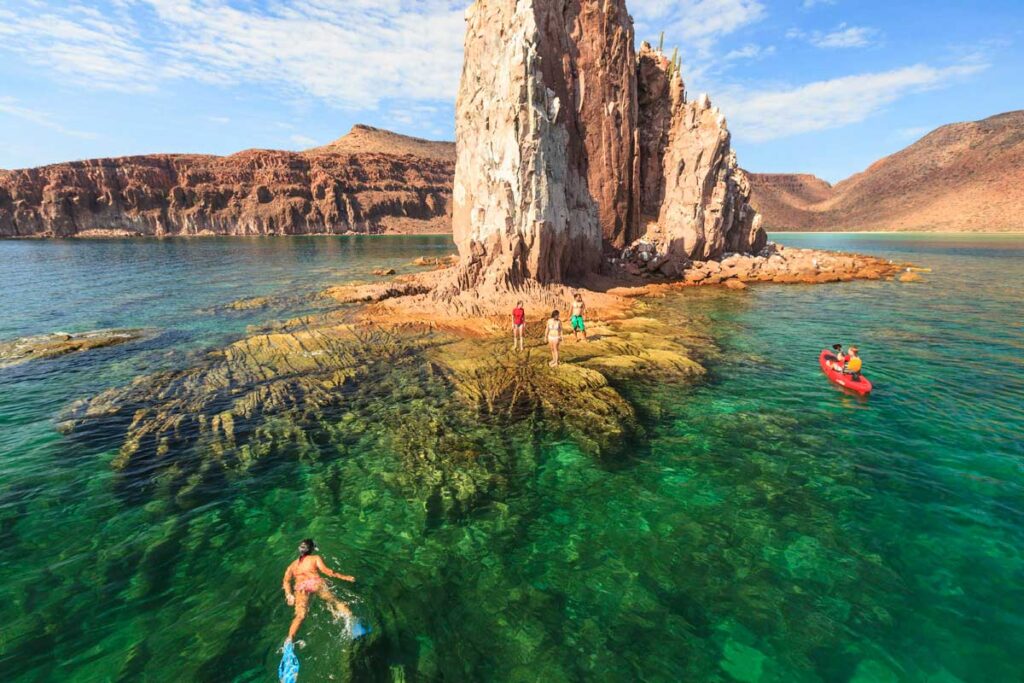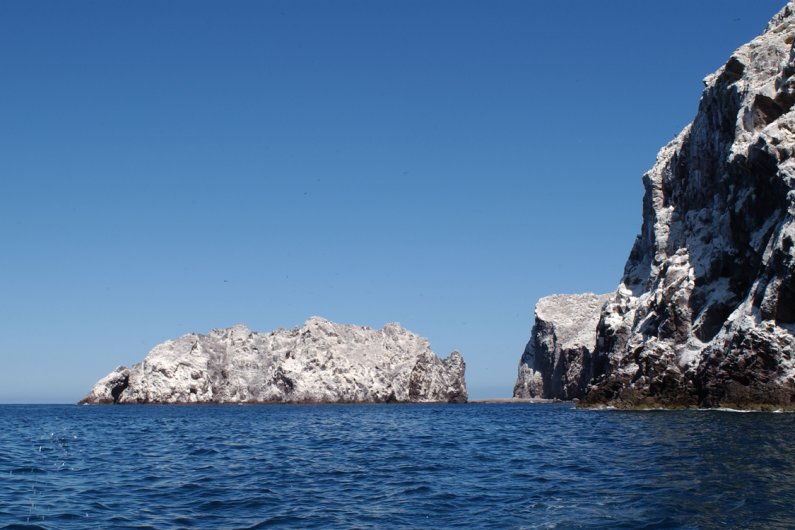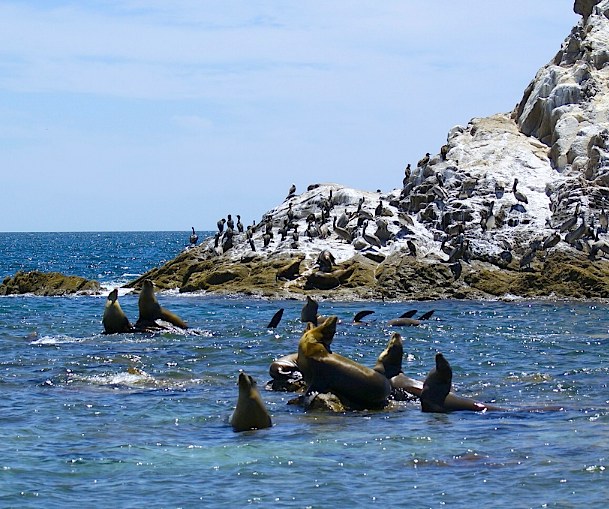There are many countries where there are a large number of landscapes, fauna and vegetation that are very beautiful and unique and are protected, because they are considered a treasure. In this article you will learn about the protected natural areas of Mexico.
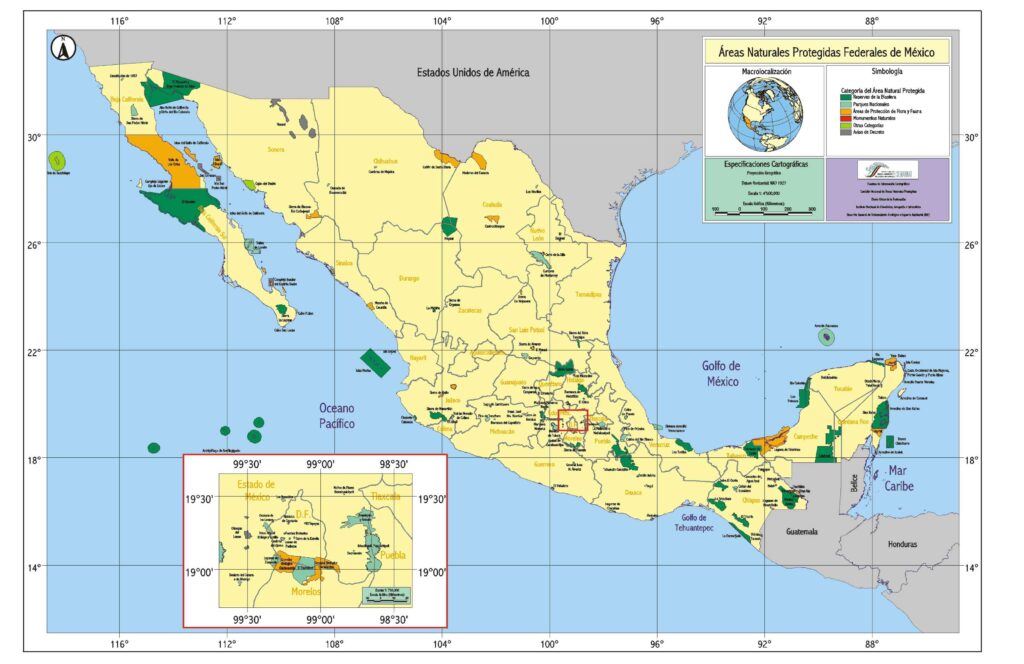
Protected Natural Areas of Mexico
Country that has the privilege of having been chosen as one of the places to have Natural Treasures.
In Mexico there is a lot of variety in its Nature
The country has a plurality that only some countries have, among those varieties are the environment, vegetation and animals.
For this plurality, the country was recognized and entered the list of the 17 countries with great varieties of nature on the planet, this recognition was made by the United Nations, through the Environment Monitoring Center that is in charge and is directing the program.
The list also includes the following countries:
- Colombia.
- Ecuador.
- Peru.
- Brazil.
- congo.
- Madagascar.
- China.
- India.
- Malaysia.
- Indonesia.
- Australia.
- Papua New Guinea.
- South Africa.
- U.S.
- Philippines.
- Venezuela.
The Federal Government, looking for a way to preserve the environment in this country, does so through the public administration, making decrees so that nine sectors of the country are part of the protected environmental areas.
The "Protected Natural Area" or protected environmental areas are those places where genuine ecosystems have not been touched by the hand of man, which is why large investments must be made to conserve them.
After 2016, the areas that are under protection are 181, which would be 90.6 million hectares, previously there were only 176 areas, which covered some 25.4 million hectares. This means that one (10,78%) of the terrestrial area and one (22,05%) of the marine area of the country are protected by the Federal Government.
The Nature Areas that have Protection are constituted by:
- The Biosphere Reserves that have protection are (45).
- The National Parks that are protected are (66).
- The Flora and Fauna Protection Areas reach (39).
- Natural Resources Protection Areas (8).
- The Natural Monuments are (5).
- The Shrines are a total of (18).
These data are offered by "the National Commission of Protected Natural Areas".
The areas that are protected and entered the list not long ago are:
- Reserve of the Biosphere of the Mexican Caribbean. It is located in the State of Quintana Roo and has a length of 5.75 million hectares.
- Sierra de Tamaulipas Biosphere Reserve. It has 309 thousand hectares.
- Deep Mexican Pacific Biosphere Reserve. It covers Nayarit, Oaxaca and Chiapas, Michoacán, Colima, Guerrero, Jalisco, and its length is 59.7 million hectares.
- Pacific Islands Biosphere Reserve. It covers 1.16 million hectares, in which there are 21 islands and 97 islets.
In a country magazine, where they talk about biological diversity, which is published every four years where they address issues that have to do with the American Continent.
The magazine makes great reference to biogeography, ecology and evolution, all this is the result of research carried out by scientists from the country and foreign scientists, who are specialists in the subject.
With all this information, it is intended to be updated with reference to conservation, control and environmental areas in the reservation and all the benefits that natural resources can have.
In this country's magazine in its 2013 publication, I provide information regarding the position in which Mexico is in relation to the other countries that also make up megadiversity.
This country has a variety of reptiles approximately 864 units, for this reason it is in second place on the list.
Mexico is third on the list for having 564 varieties of mammals.
In fifth place for the variety of amphibians it has, a total of 376, in terms of vascular plants it has an average that can be from 21.989 to 23.424.
Birds have the 11th place and the number of variety is from 1.123 to 1.150 species.
Privileged Mexico
There are several arguments that exist for this country to be megadiverse.
The first is its geographical location, it passes through the middle of the Tropic of Cancer creating a Rainy weather (tropical) which helps the numbers of species grow.
Another factor that is important in Mexico, this country has a high variety of views where the mountains are found in the first place where different types of soils, climates, varied species of fauna and flora are shown. There are Seas and oceans, forests, deserts, jungles and also has swamps, this is another sample of what this country offers to the planet.
The country is large and accommodates a large number of habitats and thanks to its progressive past there is a combination of fauna and flora from the Nearctic and Neotropical areas.
Perhaps it seems that it is not related, the indigenous culture of the territory makes its contribution, to make nature richer in relation to the domain of plants and animals.
Biosphere reserves
Mexico, being a country with diversity in the environment and in the landscapes, allows it to be seen and become a temptation. They have a geographical location, different Types of weather, which are factors that allow the evolution and conservation of an incomparable ecosystem.
It is a country where there is a lot of biological variety, perhaps the greatest diversity on Earth; this is evidenced by all the natural places that are protected. These areas that are being protected are considered a natural heritage of humanity, approved by UNESCO.
In the following, the list where all these assets are found are the Mexican reserves:
- Sierra of Tamaulipas
- Deep Mexican Pacific
- From the Mexican Caribbean
- Pacific Islands
- Bay of Angels, Whale Channels and Salsipuedes
- The Vizcaino
- Guadalupe Island
- El Pinacate and Great Desert of Altar
- San Pedro Martir Island
- Upper Gulf of California and Colorado River Delta
- Sierra de Manantlan
- Monarch Butterfly
- Sian Ka'an
- Calakmul
- Marias Islands
- National Marshes
- Sierra Gorda Queretaro
- Tehuacan – Cuicatlan
- The triumph
- Ría Lagartos
- Blue Mountains
- The Michilia
- Centla swamps
- Lacan Tun
- Upper Gulf of California and Colorado River Delta
- Chamela-Cuixmala
- Sierra del Abra Tanchipa
- Revillagigedo Archipelago
- Sierra La Laguna
- the crossroads
- The burial
- Chinchorro Bank
- The Tuxtlas
- Petenes
- Mountain range of Cuautla
- The Ocote
- Mapimi
- Canyon of Metztitlan
- Ría Celestún
- Tacana Volcano
- Sierra Gorda Guanajuato
- Zicuiran Infiernillo
- Whale shark
- Janos
- Ojo de Liebre Lagoon Complex.
Preservation and Activities
The previously mentioned Environmental Protected Areas of the country do not prohibit the circulation of human beings.
Of course these places are protected, visitors must abide by the rules that are established so that each of the national heritage sites are kept in good condition, there are cases where a permit is needed to enter the area to visit.
For example, to go to the "Alacranes" Reef, the National Commission of Natural Protected Areas (CONANP) requires that regulations be followed that guarantee the protection of the place.
There is a ban on entering the site with animals or any type of plants, it is not allowed to throw garbage, not to invade local populations. The first thing to be in those places is to have respect for the people who inhabit the place, as well as respect all physical spaces and finally respect other visitors and thus contribute to a stay in the place in total harmony.
Depending on the space to be visited, there is the possibility of carrying out sports activities such as:
- Snorkel
- Trekking.
- Rappel.
- Mountaineering.
- camping.
- Diving.
- Kayak
- rafting.
- Boat rides.
- Excursions.
- Cycling.
Visits can be made with guides to view the birds, fauna and flora with all the care required.
National Parks
The "national parks" are the places that are protected, flora and fauna protection areas in Mexico, through an official decree, the mandate is usually carried out by the President. In the following the location of some of the parks and the list of the rest that are in the country:
- Located in Baja California Sur, with an area of 2.066 km², is the Bay of Loreto.
- Located in the Gulf of California, it is a marine area with a length of 587 km2. The Espiritu Santo Archipelago is located.
- Cabo Pulmo is located in the city of San José in the municipality of Los Cabos in the state of Baja California Sur.
- Two islands that are located near the Mexican coast in the State of Nayarit. It is an archipelago, of volcanic origin, they are called the Marietas Islands.
- The Marine Zone of the San Lorenzo Archipelago
- Elizabeth Island
- The Summits of Monterrey
- The Caves of Cacahuamilpa
- The Iztaccíhuatl-Popocatépetl
- Scorpions Reef
- The Reefs of Cozumel
- Tulum
- The Western Coast of Isla Mujeres, Punta Cancun and Punta Nizuc.
- The Reefs of Puerto Morelos
- Contoy Island
- The Desert of the Lions
- The Snowy Colima
- The Hill of Garnica
- the marbles
- The Insurgent Miguel Hidalgo y Costilla
- The Gogorron
- The Summits of Ajusco
- The Springs of Tlalpan
- The Zempoala Lagoons
- The Peak of Orizaba
- The Tepozteco
- The Tepeyac
- The Chest of Perote
- The Hill of the Bells
- The Chacahua Lagoons
- The Nezahualcóyotl Flower Mills
- Benito Juarez
- The White River Canyon
- The medicines
- Padierna hills
- The Hill of the Star
- The Sabine
- The Coyoacan
- The Malinche
- The Cupatitzio Ravine
- The Insurgent Jose Maria Morelos
- Sacromonte
- The Peaks of Majalca
- The Summits of Monterrey
- Camecuaro Lake
- The Steers
- The Bosencheve
- The Sierra de San Pedro Martir
- The Desert of Carmen or Nixcongo
- The Rayon
- The Montebello Lagoons
- The Constitution of 1857
- General Juan N. Alvarez
- The Veladero
- The Sumidero Canyon
- Basaseachi Waterfall
- Tula
- El Palenque
- The boy
- The Dzibilchantún
- Veracruz Reef System
- The Summit
- Huatulco
- Organ Saw
- Xcalak Reefs
- revillagigedo
- Flora and Fauna Protection Areas
- Islands of the Gulf of California
- Ocampo
- Valley of the Cirios
- Cabo San Lucas
- Sloop
- Cacaxtla Plateau
- Lobos-Tuxpan Reef System
- Dunes of Samalayuca
- Four Ciénegas
- Chichinautzin Biological Corridor
- Santa Elena Canyon
- Toulca's snowy
- uaymil
- Tancitaro Peak
- tutuaca
- Green field
- papigochic
- Spring
- Blue waterfall
- Valley of the Cirios
- Sierra de Alvarez
- Sierra la Mojonera
- The boar
- Sierra de Quila
- Chichinautzin Biological Corridor
- Chan Kin
- Lagoon of Terms
- yum balam
- Woods of Carmen
- Sierra de Álamos-Río Cuchujaqui
- Metzabok
- Naha
- Otoch Ma'ax Yetel Kooh
- Lerma swamps
- Laguna Madre and delta of the Rio Bravo
- Bala'an Ka'ax
- Nichupte Mangroves
- Anchovies from Tonala
- Usumacinta Canyon
Natural Resources Protection Areas
Among the Zones that are covered by Forest Protection are "the Hydrographic Basin" that is: in the Necaxa River, the Valle de Bravo, Temascaltepec, Malacatepec and Tilostoc rivers. “The Forest Defense Zone of the soils” that are located in the municipalities of La Concordia, Villa Flores Ángel Albino Corzo, and Jiquipilas. The Basins that feed the Irrigation National District: 001 Pabellón, 004 Don Martín, 026 Bajo Río San Juan and 043 Nayarit State, Las Huertas.
Natural Monuments of the Country
All natural elements are considered natural treasures, of course they belong to the landscape. The places that are protected by "the National Commission of Natural Protected Areas" (CONANP) for their maintenance.
In this country there are currently five places that are classified as natural treasures. In everyday life this term is used to name any natural place that is protected by the country.
As a consequence of this, sanctuaries, parks, special protection zones and the rest of the sites are included in this category.
- Bonampak.
- Hill of the Chair.
- Turbid river of North.
- Yagul.
- Yaxchilan.
Sanctuaries
Sanctuaries are places that intertwine, sites linked between real life and from the Origin of the universe. In this country there is a great variety of natural riches, different and with many colors.
CONAP has a concept of sanctuary where they say that they are determined areas such as zones that are characterized by an enormous heritage of fauna and flora. Also for the presentation of species, subspecies or habitats of limited distribution.
- La Pajarera, Cocinas, Mamut, Colorada, San Pedro, San Agustín, San Andrés and Negrita Islands, and the Los Anegados, Novillas, Mosca and Submarino islets.
- Beach adjacent to the town called Río Lagartos
- Hydrothermal Vents of the Guaymas Basin and the Eastern Pacific Ridge
- Teopa Beach
- Ceuta beach
- Cuitzmala Beach
- Brush Beach
- Chacahua Bay Beach
- Contoy Island Beach
- Maruata and Colola beach
- Mismaloya Beach
- Puerto Arista Beach
- Rancho Nuevo Beach
- Tierra Colorada Beach
- El Tecuan Beach
- El Verde Camacho Beach
- Mexiquillo Beach
- Tlacoyunque Stone Beach

